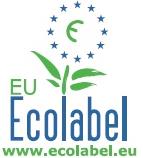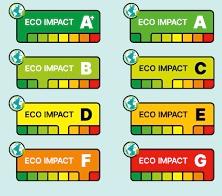 The European Commission Food Innovation Initiative, EIT Food, has developed a Foundation Earth labeling scheme for foods and beverages. The E.U. funded a consortium comprising the Leuven University of Belgium and the AZTI Research Agency, an entity of the Government of Spain to develop the system. This will be evaluated with funding from Nestle, a multinational food manufacturer, in parallel with a labeling scheme devised by Mondra, a consulting group. A number of E.U. and U.K. food manufacturers have agreed to test the Foundation Earth program with front-of-pack labels.
The European Commission Food Innovation Initiative, EIT Food, has developed a Foundation Earth labeling scheme for foods and beverages. The E.U. funded a consortium comprising the Leuven University of Belgium and the AZTI Research Agency, an entity of the Government of Spain to develop the system. This will be evaluated with funding from Nestle, a multinational food manufacturer, in parallel with a labeling scheme devised by Mondra, a consulting group. A number of E.U. and U.K. food manufacturers have agreed to test the Foundation Earth program with front-of-pack labels.
The system of labeling will assess the environmental impact of products based on greenhouse gas emission with an emphasis on carbon dioxide weighted at 49 percent; water usage, 17 percent; water pollution 17 percent and loss in biodiversity, 17 percent.
It is evident that considerable consumer education will be required before general adoption of the system. It will be important to establish consistency in both the standards applied and the label presentation. It is possible that consumers in the E.U. and U.K. will respond appropriately to the labels with a proviso that there is an understanding of how the imprinted grades and colors are assigned.
 It is inevitable that environmental labeling will be applied to food products in the U.S. It is hoped that an industry association such as FMI or a consortium of trade groups will take the initiative so that a single standard and uniform labeling will be developed. If the program is based on scientific principles and managed fairly the approach to environmental labeling may be valid and useful. Endorsement by USDA or EPA would be an added advantage.
It is inevitable that environmental labeling will be applied to food products in the U.S. It is hoped that an industry association such as FMI or a consortium of trade groups will take the initiative so that a single standard and uniform labeling will be developed. If the program is based on scientific principles and managed fairly the approach to environmental labeling may be valid and useful. Endorsement by USDA or EPA would be an added advantage.
There is concern that multiple labeling options may emerge in the U.S., as with welfare, creating confusion among consumers as to the value of the label. Determining the environmental impact of a product can depend on the level of production. Comparing a comprehensive evaluation of all the ingredients incorporated in a food product compared to final manufacturing including packaging may create widely different results and scores assigned.
Environmental labeling to achieve the objective of providing consumers with information on which to base purchase decisions must be fair and reflect the impact of the food product on the environment. Based on the past practice, even if a standard system is developed, there will always be a company or group with questionable ethics trying to game the system, hence the need for some form of USDA oversight or regulation by a frequently advocated new comprehensive food agency.